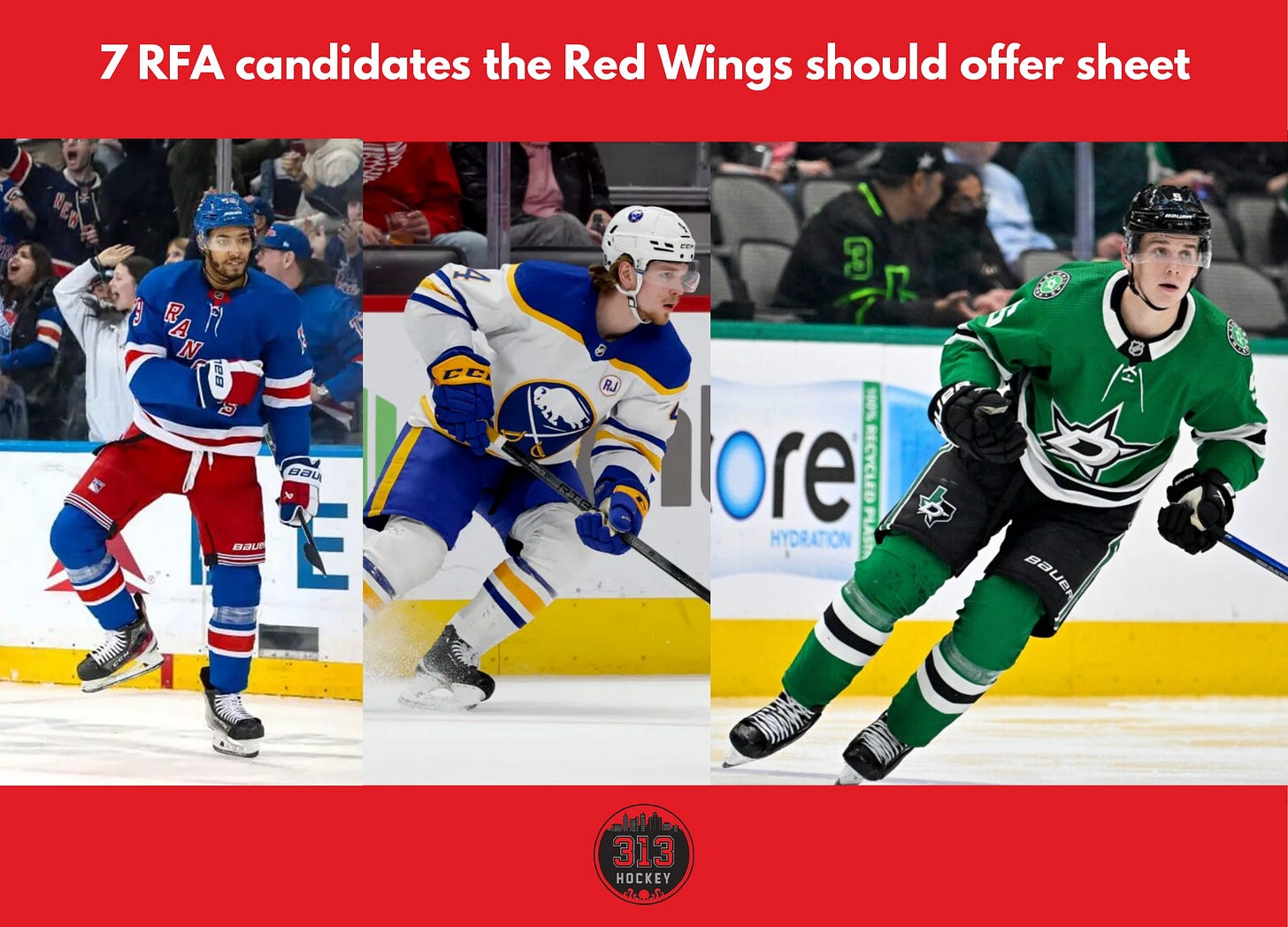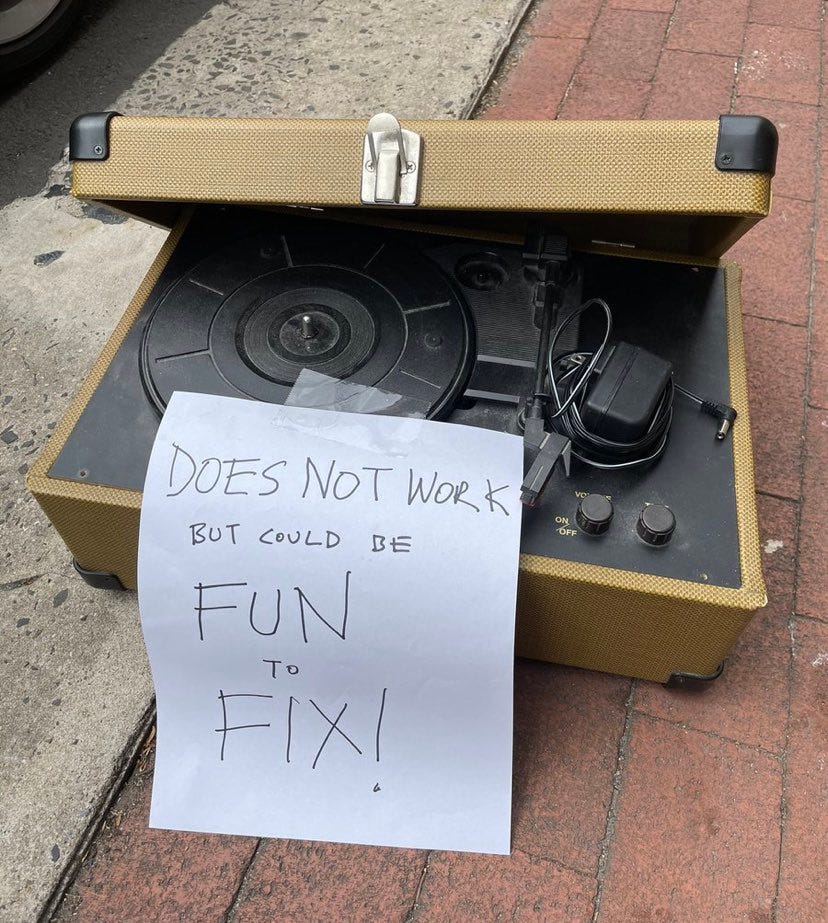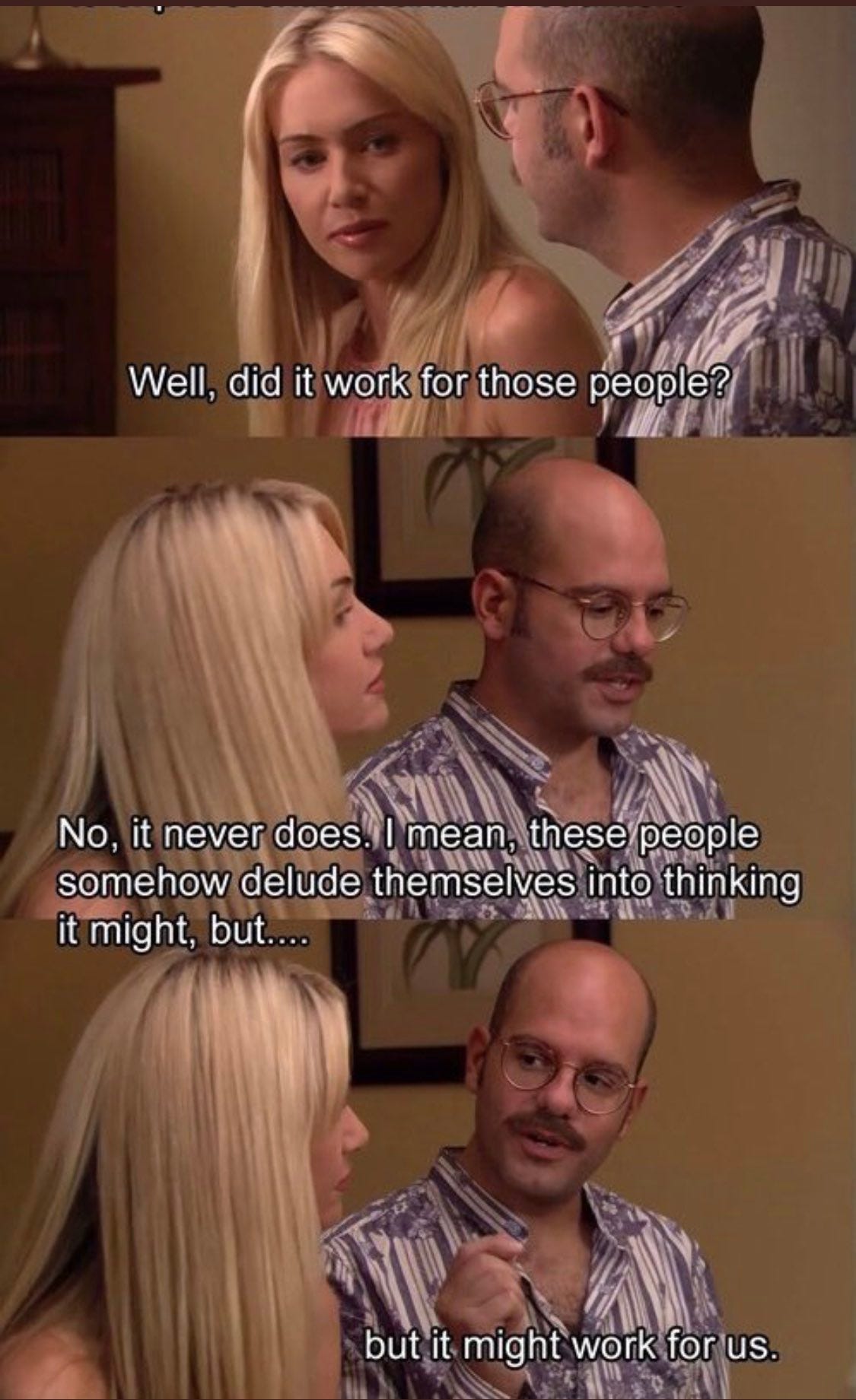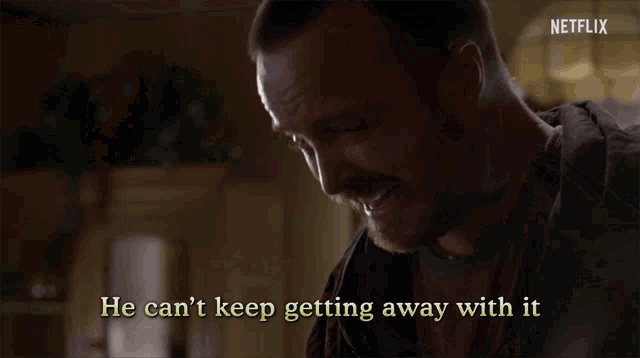7 RFA candidates the Red Wings should offer sheet
Are offer sheets en vogue this offseason?
Something’s gotta give this offseason.
The consensus across Hockeytown is overwhelming. It’s almost been a full decade since the Detroit Red Wings last made the playoffs. They hold the second-longest postseason drought behind the unfortunate Buffalo Sabres. Older fans have endured spouts of mediocrity from the pre-90s teams. Younger fans have seen two sides of Detroit: the gold standard hockey team from the early 90s-mid 2010s and the team we’ve been enduring ever since.
While we’ve seen some positives over the last few years (Moritz Seider’s Calder, Lucas Raymond playing like a top-five winger in the league, the rise of the prospect pool), this team desperately needs a shakeup if they hope to remain in the good graces of the fanbase. Some may look at the upcoming free agent class and pick out names like Sam Bennett and Aaron Ekblad (heck, I’ve done it).
Today, I’m going to try a different though experiment. A high-risk, high-reward approach: restricted free agents.
RFA? More like Real Freakin’ Annoying!
For those unfamiliar, there are two types of free agent statuses in the NHL: restrict and unrestricted free agents. Unrestricted free agents (UFAs) are free to sign wherever they like. Restricted free agents (RFAs), on the other hand, are limited in their approach. These are players that have finished their entry-level contract (typically a three-year deal) and have yet to sign their next deal. NHL players are only allowed UFA status if they’ve played in the league for seven years or have reached the age of 27.
If you’re an RFA, you have three options: sign with your team, request a trade, or sign an offer sheet. The third option is a tool that some general managers in the league use to hamstring their rivals and potentially poach talent from other teams: and one that I think Steve Yzerman should consider utilizing.
How offer sheets work
Let’s say General Manager A has a young up-and-coming player on his team (we’ll call him Todd). Todd has played his first three years of his deal, but GM A only has $4 million in cap space to sign Todd. Unfortunately for GM A, Todd has played well above a $4M/year salary. If another general manager (General Manager B) sees this bind, they can offer Todd a contract known as an offer sheet.
Should Todd decide to sign this contract (let’s say GM B offers Todd a 5 year, $6M deal), GM A has a week to either match the offer or allow Todd to join GM B’s team. If Todd signs the deal and GM A doesn’t match the offer, GM A will be compensated a pick relative to the NHL’s offer sheet compensation table (in this case, a 1st and 3rd round pick).
Is GM B paying a steep price? Absolutely. Offer sheets are a double-edged sword. The Carolina Hurricanes tended an offer sheet to Jesperi Kotkaniemi, spending a 1st and 3rd round pick to acquire him. Since then, he hasn’t scored above 45 points. On the other hand, the St. Louis Blues offer sheeted Dylan Holloway for $4.5M and secured a 23-year-old forward with 63 points in 77 games.
Like I said: high risk, potentially high reward. But who could the Wings target this offseason? Here are a few candidates I think are worth considering:
1. K’Andre Miller - New York Rangers
At 25 years of age, K’Andre Miller has been a mainstay on the Rangers’ blue line for the last five years. He’s been through it all: top-tier teams, nightmare seasons, and everything in-between. He anchors the team’s second defensive pairing, and, in Detroit, he’d likely do the same opposite Albert Johansson. Miller’s role as a minute-munching defenseman makes him a great fit for Detroit, who desperately needs some steadiness on the back end.
The cost: Miller will likely land somewhere around the $6-7M/year range for his current deal, costing the Wings a first and third round pick. This may seem like a steep price tag, but it’s important to note that Miller is 25 and the salary cap is set to increase substantially over the next few years. Locking down a guy like Miller at an affordable term is exactly the kind of deal the Wings should consider if they’re hoping to take that next step.
2. Bowen Byram - Buffalo Sabres
Poor Buffalo. Between ex-Sabre Sam Reinhart scoring four goals to secure his second Stanley Cup and JJ Peterka mulling over a trade, things just keep getting tougher. It certainly doesn’t help that Bowen Byram, acquired in the Casey Middelstadt trade to the Avalanche, also wants out.
Byram has had a substantially different career from Miller. After suffering a series of concussions, Byram won the Stanley Cup with the Avs, only to be traded to Buffalo after. Byram finished his first full 82-game season last year, putting up 45 points at just 23 years of age.
The cost: Similar to Miller, Byram will command a salary closer to the $7M/year range. With that said, however, I believe Byram has a more compelling case to land closer to the $8M threshold. He’s younger than Miller and has shown he’s capable of taking on some of the toughest minutes in the league. This would cost Detroit a first, second, and third round pick, but there’s no guaranteeing that any of those picks would translate into a player of Byram’s caliber.
3. Nils Lundkvist - Dallas Stars
If you were looking for a more realistic pick, Lundkvist is probably it. He’s 24 and approaching RFA status for the Stars, who have a bevy of players that need new deals. So what gives? Well, for starters, Lundkvist spent more than half of last season on LTIR. Before that, he spent several games in 2022-23 and 2023-24 in the press box as a healthy scratch. Lundkvist is a project player that could potentially pan out if he’s given a shot.
The cost: Lundkvist is coming off a one-year, $1.25M deal. Before his shoulder surgery, he finally seemed like he’d found a fit on the team. If the Wings want to pry him away from the Stars, they could sign him to an identical deal or try to whet his appetite with a one-year, $2M deal. This would only cost the Wings a third round pick — and it might make him too pricy for Dallas to keep.
4. Cody Glass
If “I can fix him” was a player, it would be Cody Glass. Glass has played for four NHL teams in his short career, most recently finishing a short stint with the New Jersey Devils. In that time, he’s racked up a decent 93 points in 252 games. In all likelihood, we know what to expect out of Glass at this point in his career. But…
Glass isn’t the top-six scorer everyone thought he’d become. With that said, however, he’s shown to be a great fit on a checking line. At 6’3” and weighing over 200 lbs, he showcased his physicality last season with 53 hits. He’s been consistently rated in the top 90th percentile of defense with forwards, too. It’s not a sexy offer sheet by any means, but contenders are built one player at a time.
The cost: Glass looks poised to make a clean $2.5-3M/year on anywhere from a two to three-year deal. This puts him in second-round pick territory on the offer sheet chart. Is a bottom-six forward worth that? Well, it depends on whether you’re looking for scoring or defense. The Wings need both, but they’ll only get one from Glass. It’s up to Yzerman to determine if Glass is worth that price.
5. Nic Hague - Vegas Golden Knights
Hague has been linked to the Wings since the moment the Golden Knights were eliminated from playoff contention. The colossal 6’6” defenseman fits the exact mold Yzerman prefers: big, powerful, minute-munching, with plenty of playoff experience. The Knights, in yet another cap crunch, will likely offload him this season. Could the Wings lock him down with an offer sheet or possible trade? After all, Vegas will need all the cap space they need to sign Mitch Marner…right?
The cost: Hague is coming off a three-year, $2.29M/year deal. If the Wings don’t pursue him in a trade, signing him to an offer sheet around $4.5M/year could easily scare away Vegas from matching the deal and secure a second-pairing defenseman with physicality. All it’d cost is a second-round pick — the same Vegas used to draft him.
6. Jason Robertson - Dallas Stars
Now we’re playing with fire.
Jason Robertson is far and beyond the best forward on the Dallas Stars. He’s three seasons removed from a 109-point campaign and scored back-to-back 80-point seasons, ending 2024-25 with 35 goals. If Robertson played for a “bigger market” team like the Rangers or Maple Leafs, he’d be a near-constant subject of discussion throughout the league. With that said, it’s going to be tough for the Stars to keep him around, especially considering how many players are up for new deals.
The cost: Don’t wince, but it isn’t gonna be cheap. If we’re being realistic here, it’s gonna be closer to the $10-11M range — two firsts, a second, and a third. Again, Robertson is one of the best forwards in the league. Few players can say they’ve scored over 100 points in a season. He’d immediately propel Detroit to one of the best offenses in the league. Of course he isn’t going to be cheap. The question is, would he sign with the Wings? Or would it be a better idea to pursue a possible trade in the next season or two?
7. Matthew Knies - Toronto Maple Leafs
Okay, there’s almost a zero percent chance of this happening, but a boy can dream. Knies showed his stuff during the playoffs this season. He’s imposing, relentless, and the perfect weapon a team needs to make a deep run in the playoffs. He’d immediately fit on the team’s top-six, taking a ton of the workload off players like DeBrincat and Raymond.
The cost: This is where things get tricky. With the departure of Mitch Marner, the Leafs will have plenty of cap space to sign Knies. But if the Wings do want to make a push for a 22-year-old who’s shown his stuff in the playoffs, they’re going to have to pay a pretty price. We’re talking $9M or more. In offer sheet terms, that’s a first, a second, and a third. Yes, it’s a huge price tag. Yes, it’s a gamble. It almost certainly won’t happen. But if you’re looking for a league-changing move, this is it. To top it all off, Toronto will almost certainly match the deal. But, hey, a guy can dream, right?
Who do you want the Wings to offer sheet?







